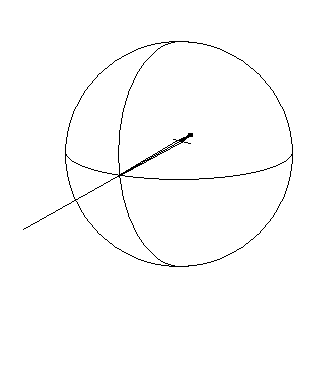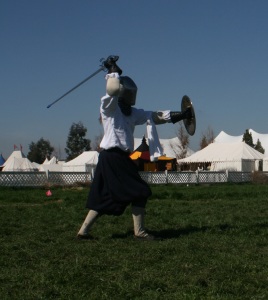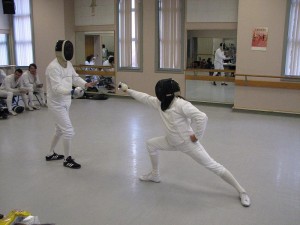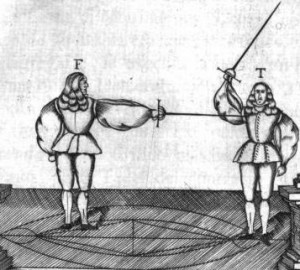Movements and Tactics in Spanish True School
In La Verdadera Destreza, Movements are vectors which describe the motion of the sword (or sword arm) in a direction. You can read about these movements in my previous article here.

The Weapon can move in 3 dimensions
To go further we need to classify movements into two groups.
- An Executive Movement is a vector of the weapon with the potential to deliver a wound either by thrust or cut.
- A Dispositive movement is a vector of the weapon which does not deliver the final wound. This may be a preparation strike, a defensive movement, or even wasted movements
Executive Movements:
- Forward
- Natural (downward)
- Aligning Lateral
Dispositive Movements
- Backwards
- Offline Lateral
- Violent (rising)

Chambering a cut may prepare an attack but it is not the final movement of an attack. A non-attacking movement (even a preparation) is a Dispositive movement
Note: Without too much effort you can imagine instances in which a rising movement might be executive (rising cut) and a natural movement might be dispositive (atajo). More on this later.
Application
By decomposing a fencing phrase into its movements we gain insight into both the fencing tempi and the role of each movement. Here is an example fencing phrase broken down by movements:
The Master executes Atajo and thrust by detachment:
|
1. |
Violent (rising) mixed with Offline Lateral to cross the opposing sword on the inside line |
Dispositive |
|
2. |
Natural (downward) to subject the opposing steel |
Dispositive |
|
3. |
Aligning into presence mixed with Forward to deliver the thrust |
Executive |
The student parries and ripostes by half reverse:
|
1. |
Natural mixed with Offline to subject the opposing steel downwards on the inside line |
Dispositive |
|
2. |
Aligning mixed with Forward to deliver the half reverse to the right eye |
Executive |
Opposing the Enemy’s Movements with Movements
In his book (Treatise 3, Ch.3) on the opposition of Movements Ettenhard plainly describes the tactical solution to each movement committed by the adversary:
|
Movement |
Type |
Counter |
|
Violent (rising) |
Dispositive |
Forward (Right Angle) |
|
Offline Lateral |
Dispositive |
Forward (Right Angle) |
|
Backward |
Dispositive |
Forward (Right Angle) |
|
Forward |
Executive |
Natural (Atajo) |
|
Aligning Lateral |
Executive |
Natural (Atajo) |
|
Natural |
Executive |
Natural (Atajo) |
The Forward movement which presents right angle or the thrust opposes all the Dispositive movements:
|
With which I say that this is the one [Forward Movement] that is opposed to all because since it is worked in reason of the Right Angle it has the preeminence of the greatest reach, moving in correspondence to the nearest Point of Contact, where one should constitute the strike in the opponent… |
~Ettenhard (translated by Dr. Mary Curtis)
The Natural movement which subjects enemy attacks downward opposes all the executive movements (from which the strikes are composed):
|
To the Dispositive Movements, the Executives follow, whose opposition is different due to having to make it with an engagement of the Sword and the other of free cause: in a way that the Forward Movement, that of Aligning Lateral and the Natural (which are the ones that by nature form the strikes) are destroyed and opposed to the Natural by its greater speed, strength, and reality… |
~Ettenhard (translated by Dr. Mary Curtis)
Simplest Form:
- Adversary presents Dispositive Movement, Right Angle
- Adversary presents Executive Movement, Atajo



